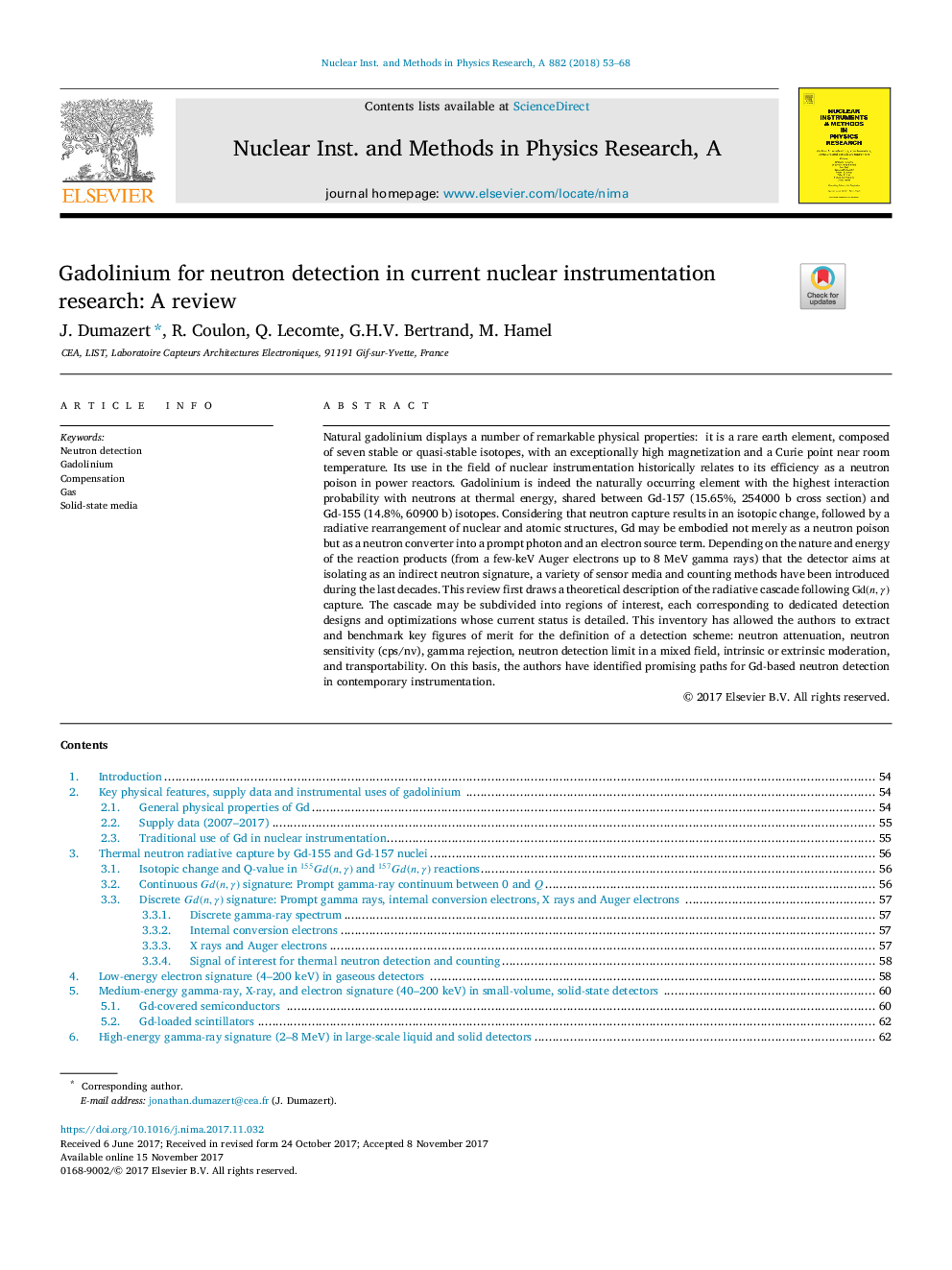| Article ID | Journal | Published Year | Pages | File Type |
|---|---|---|---|---|
| 8167048 | Nuclear Instruments and Methods in Physics Research Section A: Accelerators, Spectrometers, Detectors and Associated Equipment | 2018 | 16 Pages |
Abstract
Natural gadolinium displays a number of remarkable physical properties: it is a rare earth element, composed of seven stable or quasi-stable isotopes, with an exceptionally high magnetization and a Curie point near room temperature. Its use in the field of nuclear instrumentation historically relates to its efficiency as a neutron poison in power reactors. Gadolinium is indeed the naturally occurring element with the highest interaction probability with neutrons at thermal energy, shared between Gd-157 (15.65%, 254000 b cross section) and Gd-155 (14.8%, 60900 b) isotopes. Considering that neutron capture results in an isotopic change, followed by a radiative rearrangement of nuclear and atomic structures, Gd may be embodied not merely as a neutron poison but as a neutron converter into a prompt photon and an electron source term. Depending on the nature and energy of the reaction products (from a few-keV Auger electrons up to 8 MeV gamma rays) that the detector aims at isolating as an indirect neutron signature, a variety of sensor media and counting methods have been introduced during the last decades. This review first draws a theoretical description of the radiative cascade following Gd(n,γ) capture. The cascade may be subdivided into regions of interest, each corresponding to dedicated detection designs and optimizations whose current status is detailed. This inventory has allowed the authors to extract and benchmark key figures of merit for the definition of a detection scheme: neutron attenuation, neutron sensitivity (cps/nv), gamma rejection, neutron detection limit in a mixed field, intrinsic or extrinsic moderation, and transportability. On this basis, the authors have identified promising paths for Gd-based neutron detection in contemporary instrumentation.
Related Topics
Physical Sciences and Engineering
Physics and Astronomy
Instrumentation
Authors
J. Dumazert, R. Coulon, Q. Lecomte, G.H.V. Bertrand, M. Hamel,
